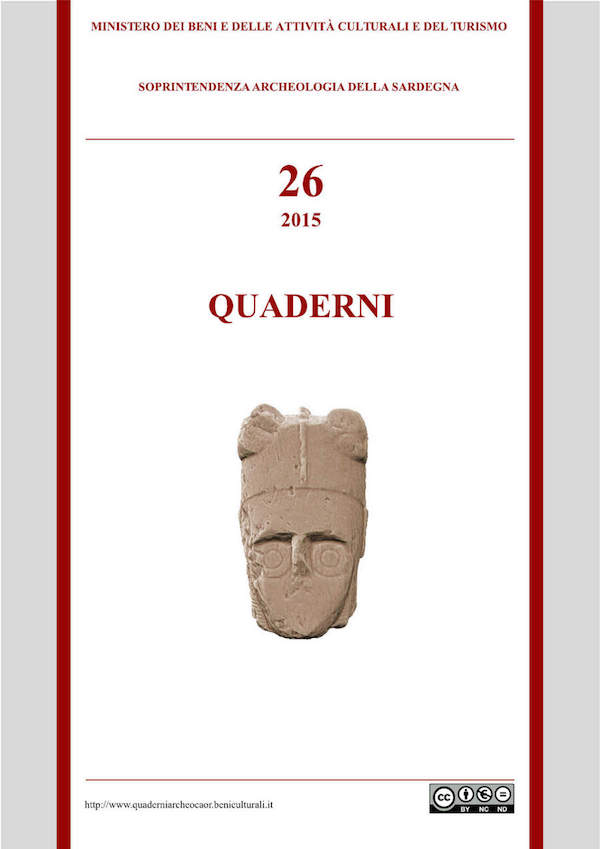Il santuario nuragico di Abini a Teti (NU): storie di un sito, di uomini e di un demone eroe
Parole chiave:
Abini, bronzetti, età nuragica, arte, fonte sacra, nuragic bronze, nuragic period, art, sacred-springAbstract
Nel settembre del 1865 si rinvennero alcune statuine di bronzo tra i ruderi di antichi edifici nella località denominata Abini, nelle campagne del villaggio di Teti. A darne notizia fu per primo il Canonico Giovanni Spano, che curò una dettagliata descrizione di alcuni dei reperti recuperati. Inizia così la storia di uno dei siti maggiormente rappresentativi della produzione bronzistica di età nuragica. Tra quei reperti che oggi arricchiscono le vetrine dei Musei archeologici non solo sardi rientra anche la figura forse più nota tra tutte quelle del vasto campionario iconografico a cui ci hanno abituati gli artigiani dell’antichità: il demone eroe con quattro occhi e quattro braccia.
A few statuettes were found amongst the ruins of ancient buildings in a place known as Abini, in the countryside close to the village of Teti, in September 1865. The canon Giovanni Spano, who edited a detailed description of some recovered artifacts, was the first person to report this finding. Thus began the story of one of the most representative sites for the production of Nuragic bronze statuettes. These artifacts enrich archaeological showcases in many museums, not just in Sardinia. Amongst those artifacts is the "demone-eroe", with four eyes and four arms, perhaps the best-known figure from the vast collection of iconographic varieties that we are familiar with, thanks to the great production of artisans of the ancient times.
Pubblicato
Fascicolo
Sezione
Copyright (c) 2020 Quaderni

Questo lavoro è fornito con la licenza Creative Commons Attribuzione - Non commerciale - Non opere derivate 4.0 Internazionale.





